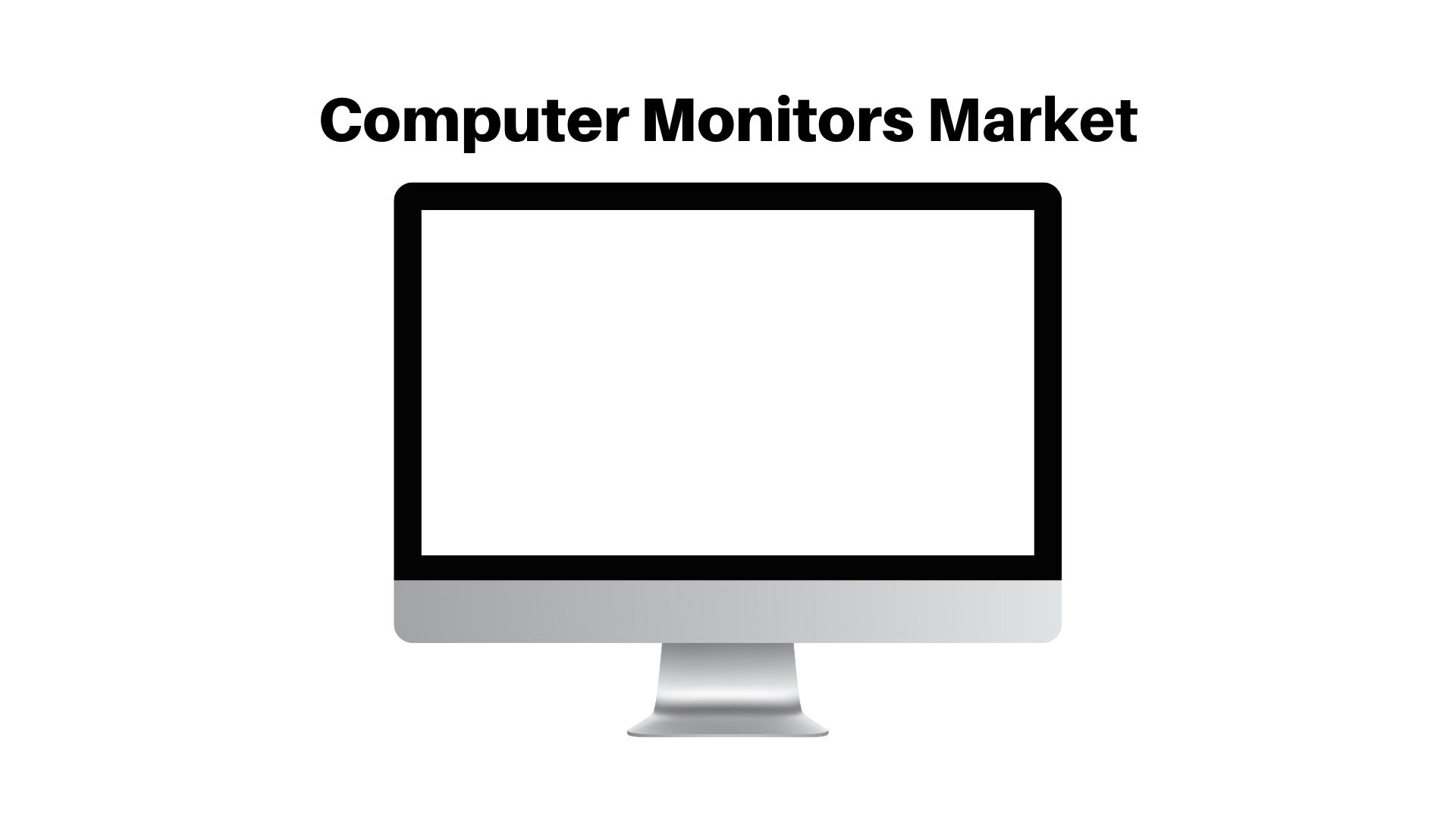Computer Monitors Market is Estimated to Showcase Significant Growth of USD 43.5 Bn in 2032 With a CAGR 5.2%

Page Contents
Market Overview
Published Via 11Press: The Global Computer Monitors Market size is forecast to reach USD 43.5 Bn by 2032 from USD 26.22 Bn in 2022, growing at a compound annual growth rate (CAGR) of 5.2% from 2023-2032.
Segments: The market can be segmented based on type, resolution, size, application, and region. By type the market is divided into CRT, LCD, LED, OLED and more; by resolution HD, Full HD, or 4K; and by size into small/medium/large monitors. Finally, by application, it could be divided into gaming, home entertainment/corporate use cases, etc.
Regional Analysis: North America held the largest market share in 2020 due to the high adoption of advanced technologies and the presence of major players in the region. On the other hand, Asia Pacific is expected to experience the highest compound annual growth rate during the forecast period due to the growing demand for monitors in emerging economies such as China and India.
Key Players: The major players operating in the market include Dell Technologies, Inc., HP Inc., Samsung Electronics Co., Ltd., LG Electronics Inc., Acer Inc., Lenovo Group Limited, AsusTek Computer Inc., BenQ Corporation, ViewSonic Corporation and Sony Corporation among others.
Factors Fuelling the Market: The rising demand for high-resolution monitors, remote work opportunities, and gaming are driving this market. Furthermore, advanced technologies such as curved screens, 3D displays, and touchscreens are contributing to its expansion.

Drivers, trends, and challenges have an impact on market dynamics, which can impact businesses. Request for PDF sample report
Key Takeaways
- The global computer monitor market is projected to experience a compound annual growth rate (CAGR) of 5.2% from 2022-2032.
- North America held the majority of the market share in 2020, while the Asia Pacific region is anticipated to experience the highest compound annual growth rate during this forecast period.
- The market is being driven by the increasing demand for high-resolution monitors, the rise of remote work opportunities, and the growing popularity of gaming.
Regional Snapshot
- North America: In 2020, the North American region held the largest market share due to the high adoption of advanced technologies and the presence of major players in this region.
- Europe: The European market is projected to expand steadily due to the rising adoption of advanced technologies and an escalating demand for monitors in both gaming and corporate sectors.
- Asia Pacific: The Asia Pacific region is forecast to experience the highest compound annual growth rate during this forecast period due to increased demand for monitors in emerging economies such as China and India.
- Middle East & Africa: The MEA region is expected to experience moderate growth due to the increasing adoption of remote work and growing interest in gaming.
Drivers
- Rising Demand for High-Definition Monitors: With the growing trend towards high-definition content, there has been an uptick in demand for monitors with higher resolution – such as 4K and 8K – among consumers and businesses alike. This demand is expected to continue driving growth within the computer monitor market.
- Rise of Remote Work: The COVID-19 pandemic has hastened the trend toward remote work, leading many businesses to invest in monitors for employees' home offices. This has resulted in an increased demand for monitors with larger screens, higher resolution images, and superior connectivity options – expected to drive growth within the computer monitor market.
- The popularity of Gaming: The gaming industry continues to be a major driving force in the computer monitor market. Gamers require high-performance monitors with fast response times, high refresh rates, and low input lag to enjoy an immersive gaming experience. As this sector grows, so too does the demand for gaming monitors.
- Technological Advancements: The development of advanced technologies like curved screens, 3D displays, and touchscreens is propelling the growth of the computer monitor market. These innovations improve user experience by offering better-viewing angles, color accuracy, and contrast ratios.
Restraints
There are some potential restraints that could hinder the growth of the computer monitors market, such as:
- High Cost: Advanced monitors with high resolution, large screens, and advanced features tend to be more expensive, which could limit their appeal to price-sensitive consumers.
- Increasing Adoption of Mobile Devices: As more mobile users adopt devices like smartphones and tablets, it could reduce demand for traditional desktop computers and monitors, potentially hindering growth in the computer monitor market.
- Environmental Concerns: Electronic waste, such as computer monitors, is becoming an increasing environmental problem. To combat this issue, regulations have been put in place which restrict electronic waste disposal – potentially impeding market growth in the process.
- Competition from Alternative Display Technologies: Alternative display technologies such as projectors and virtual reality headsets could potentially impact the demand for computer monitors, especially in specific applications like gaming and immersive experiences.
- Supply chain Disruptions: The COVID-19 pandemic has caused supply chain disruptions and production delays, potentially impacting the availability and pricing of computer monitors in the short term.
Opportunities
- Growing demand for ultrawide and curved monitors: Ultrawide and curved monitors offer a wider field of view with an immersive viewing experience, leading to their adoption among gamers and creative professionals. This provides manufacturers with an opportunity to develop new, innovative designs in response to this growing need.
- Growing Demand for Monitors in Emerging Markets: Emerging economies such as China and India are experiencing an uptick in monitor sales due to the growing IT industry, increased remote work adoption, and rising disposable income levels. Manufacturers could take advantage of this growing market by offering affordable yet feature-packed monitors tailored specifically for these regions' needs.
- The growing adoption of smart home devices such as speakers and displays presents manufacturers with an opportunity to introduce monitors that feature integrated voice assistants and home control features.
- Advancements in Display Technologies: Recent advances in display technologies, such as quantum dot displays and micro-LED displays, could offer better color accuracy, higher contrast ratios, and lower power consumption – providing manufacturers with an opportunity to introduce new and improved monitors.
- Integration with Other Technologies: The integration of monitors with other technologies, such as augmented reality and virtual reality, could offer new applications and use cases, driving the demand for specialized monitors.
Challenges
- Intense Competition: The computer monitors market is highly competitive, with several established players and new entrants competing for market share. This fierce competition could limit the growth of smaller firms and put pressure on pricing and profitability.
- Changing consumer preferences: As consumer tastes and demands are constantly shifting, manufacturers must adapt in order to stay ahead of the competition. This requires significant investments in research and development – something which smaller players with limited resources may face difficulty meeting.
- Shorter product life cycles: As technology continues to advance, product lifespans are getting shorter. This puts pressure on manufacturers to launch new and innovative products at a faster rate – something which may pose as a challenge for some businesses.
- Complex Supply Chains: The computer monitors market is dependent on global supply chains that could be disrupted by factors such as trade tensions, natural disasters, and pandemics. This could affect the availability of components and raw materials, leading to production delays and cost increases.
- Environmental Concerns: Electronic waste, including computer monitors, is becoming an increasing environmental issue. Manufacturers must adhere to regulations and utilize sustainable practices in order to minimize their impact on the environment; otherwise, costs could rise and affect profitability.
Recent Developments
- 360-Degree Monitors: Some manufacturers have introduced monitors with a 360-degree rotating display, offering an immersive viewing experience and ideal for collaboration or gaming.
- Increased Focus on Sustainability: Many manufacturers have announced initiatives to reduce their carbon footprint and use sustainable practices in their production processes. This includes recycling materials, cutting energy consumption, and responsible disposal of electronic waste.
- Introduce Mini-LED Displays: Mini-LED displays offer higher contrast ratios and superior color accuracy compared to traditional LED displays, leading some manufacturers to introduce monitors with mini-LED screens for improved gaming and video editing experiences.
Key Market Segments
Type
- With DisplayPort
- Without DisplayPort
Application
- Multi-display
- Single display
Key Market Players
- Apple (US)
- Philips (Netherlands)
- Acer (Taiwan)
- Dell (US)
- Lenovo (China)
- Samsung (South Korea)
- Sony (Japan)
- AOC International (Taiwan)
- Qisda (Taiwan)
- ASUSTeK Computer (Taiwan)
- Chuntex Electronics (Taiwan)
- LG Electronics (South Korea)
- Gechic Corporation (Taiwan)
- Eizo Nanao(Japan)
- Hannspree (Netherlands)
- Hewlett-Packard (US)
- Iiyama (The Netherlands)
- Lite-On (Taiwan)
- NEC (Japan)
- Planar (US)
Report Scope
| Report Attribute | Details |
| The market size value in 2022 | USD 26.2 Bn |
| Revenue forecast by 2032 | USD 43.5 Bn |
| Growth Rate | CAGR Of 5.2% |
| Regions Covered | North America, Europe, Asia Pacific, Latin America, and Middle East & Africa, and Rest of the World |
| Historical Years | 2017-2022 |
| Base Year | 2022 |
| Estimated Year | 2023 |
| Short-Term Projection Year | 2028 |
| Long-Term Projected Year | 2032 |
Frequently Asked Questions
Q: What is the average size of computer monitors?
A: The average size of computer monitors is around 24 inches, but larger screens are becoming increasingly popular, especially for gaming and professional applications.
Q: What is the difference between LCD and LED monitors?
A: LCD (liquid crystal display) monitors use a backlight to illuminate the screen, while LED (light-emitting diode) monitors use an array of LED lights for illumination. LED monitors tend to be more energy-efficient and offer better color accuracy and contrast ratios compared to LCD monitors.
Q: Can computer monitors be used as a TV?
A: Yes, many computer monitors come with HDMI ports and can be used as a TV with the addition of an external tuner or set-top box.
Q: What is the difference between a gaming monitor and a regular monitor?
A: Gaming monitors have faster response times, higher refresh rates, and lower input lag compared to regular monitors. This makes them ideal for gaming, as they offer a more immersive and responsive experience.
Q: What is a 4K monitor?
A: A 4K monitor is a monitor with a resolution of 3840 x 2160 pixels, which is four times the resolution of a standard 1080p monitor. 4K monitors offer sharper and more detailed images, making them ideal for video editing and other professional applications.
The team behind market.us, marketresearch.biz, market.biz and more. Our purpose is to keep our customers ahead of the game with regard to the markets. They may fluctuate up or down, but we will help you to stay ahead of the curve in these market fluctuations. Our consistent growth and ability to deliver in-depth analyses and market insight has engaged genuine market players. They have faith in us to offer the data and information they require to make balanced and decisive marketing decisions.



